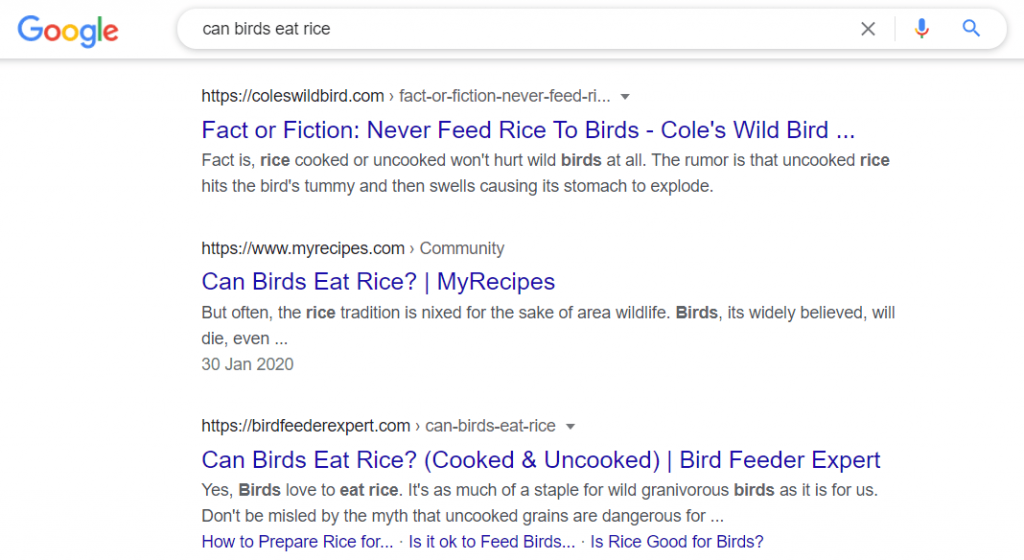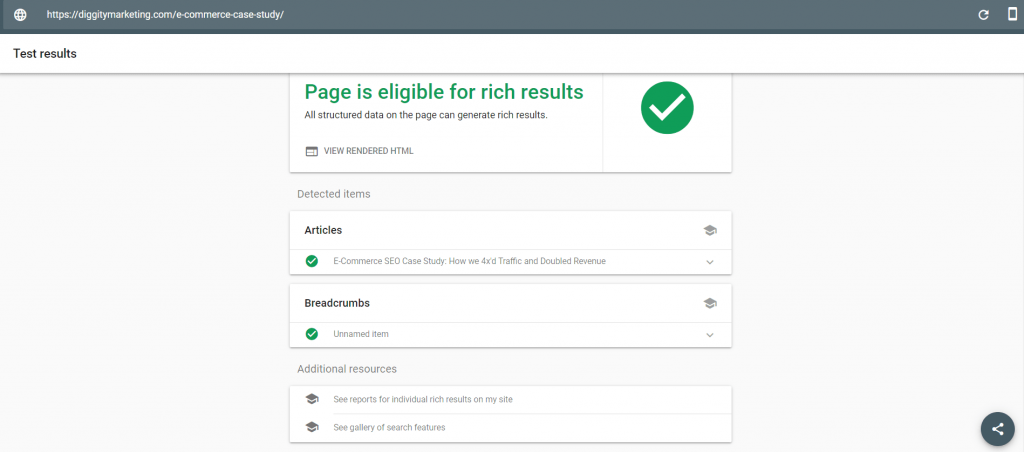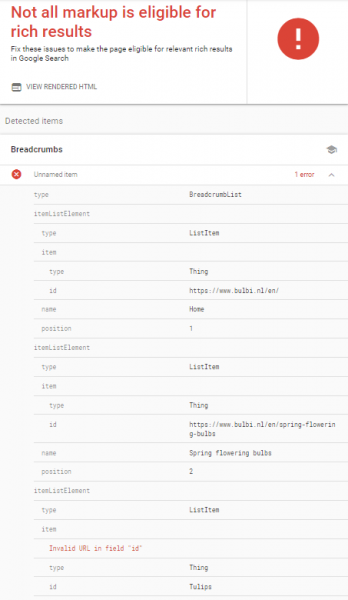Starting a new website from scratch?
I’m going to share with you the steps my team at The Search Initiative took to grow a relatively new marketing service website’s monthly organic traffic by a whopping 3012%.
From this case study, you will learn how to achieve these results by:
Forming a content strategy that focuses on building topical authority, user intent and E-A-T.
Improving the site structure and implementing structured data.
Building authority with links.
Table Of Contents
The Challenge
This client operates in the marketing industry within certain states within the US, specializing in several different marketing services.
The client came to The Search Initiative with the aim of becoming an authoritative voice within their niche. This meant making sure that the content on the site, in particular, expressed topical authority or E-A-T (Expertise-Authority-Trust).
Although keyword difficulty wasn’t going to be too high for the areas that the client covered, we knew that since we were pretty much starting from scratch, there was still some catching up to do in all aspects of SEO.
The following is a step-by-step guide on how you can achieve incredible results with your SEO campaign.
Focus On Content
If you’ve ever had trouble ranking for a website focusing on a specific niche, or couldn’t rank a new product/review/location page on an authority site, it’s very likely that the root cause for this is a lack of topical authority (which is also sometimes referred to as topical relevance).
This video goes into detail about how to build topical relevance with interlinking:
What do I mean by “topical authority”?
For that, you need to understand that these days, Google ranks domains that have several pages targeting a specific topic. Whereas before, you could rank with just a single landing page.
This means that if you’re trying to rank a page on a topic, Google wants to see additional supporting content on your site that links to it.
By building a cluster of pages to support the main page you want to rank, you’re essentially establishing topical relevance in Google’s eyes.
Topical authority is currently one of the hottest topics (for lack of a better word) in Search – and rightfully so. Working toward topical authority can help you expand your site’s keyword visibility by ranking for a broader net of search terms.
Let me show you how…
Building Topical Authority With Supporting Content
In order to establish and build topical authority, you need to make sure that you’re answering as many questions as you can about your topic, new product, or if you have a local SEO site, a new location that you want to target.
So, instead of purely focusing on the core landing pages of your website, you can build topical relevance by creating supplemental content.
To find out more about Topical Authority, watch this interview with Koray Tugberk.
Here’s a step-by-step breakdown of what you’ll need to do:
Step 1: Identify The Core Topic
It’s likely that you’ll already have a topic in mind. For example, you may be launching a new product/service for your online business, or you may be branching out your local business to operate in a new city or region. Alternatively, like us, you may have a new site that targets a micro-niche.
For example, you may have something like the following:
Main Page – best pioneer turntable: a large piece of content that details the best pioneer turntables.
Supplemental Article 1 – top vintage pioneer turntables: a shorter article specifically about the best vintage pioneer turntables.
Supplemental Article 2 – pioneer turntable model list: a shorter article listing pioneer turntable models.
Supplemental Article 3 – pioneer pl-990 vs. audio technica at-lp60: a shorter article comparing these two turntables from pioneer and audio technica.
Supplemental Article 4 – pioneer turntable parts: a shorter article outlining the various parts of a pioneer turntable.
If you already have a topic in mind, you can skip on to Step 2.
But what if you don’t fall into either of the above scenarios and don’t know where to start?
Let’s say you have a site that reviews turntables, and are looking for a new topic to cover.
Here’s how you can find new topics and keywords to cover using ahrefs’ Keyword Explorer tool:
1. Search For Broad Keywords
2. Review The Parent Topics
Looking at the parent topics, you may identify that you don’t have any articles about “pioneer turntables”.
Step 2: Create Supporting Articles For The Chosen Topic
Now that you have your chosen topic, you’ll want to create some supporting articles for it – I recommend around 4 articles to support your main landing page on the topic.
To find relevant keywords for these supporting articles, use Ahrefs’ Keyword Explorer to:
1. Find Competitors for the Topic
2. Reverse Engineer Your Competitor’s Keywords
Pick a primary keyword for your main landing page along with primary keywords for the supplemental articles too.
Step 3: Add Contextual Links From Supplementary Articles to the Main Page
This step is really important.
Google follows links to discover new content to rank.
Therefore, you need to add contextual links from all of your supplementary articles to your main article within the topic.
Add your contextual links in the middle of the body of an article.
Doing this will help Google see that your supporting article is being reinforced by your main article on that topic.
When it comes to deciding what anchors to use for onsite links like this, you don’t have to be as careful as you would for off site link building.
For example, here’s one way you may want to link to your main page from the four supporting articles:
Target anchor: best pioneer turntable
Target anchor: best pioneer turntables
URL anchor: site.com/best-pioneer-turntables/
Misc anchor: for more information
With this method, you’re essentially creating clusters of content that are topically related. This allows you to pass value from the smaller articles to the main content piece and, as a result, have a better chance of ranking that core page.
User Intent
A significant element of your content strategy should be focused on nailing the user intent (or search intent) of your pages.
For example, if you search for “buy nintendo switch”, Google displays results that allow you to purchase the games console – which is what you’d expect.
User intent is about making sure that your pages reflect what the searcher is looking for.
Informational – The searcher wants to learn something i.e., how tall is the Eiffel Tower. Informational keywords typically include words/phrases like: who, what, where, when, why, how, guide, tutorial, tips, learn, etc.
Navigational – The searcher is looking for a particular website i.e., LinkedIn login. Navigational keywords typically include brand, product or service names.
Commercial Investigation – The searcher is researching a specific product or service i.e., best turntables under $500. Commercial keywords generally include words like best, top rated, top, review, comparison, etc.
Transactional – The searcher is looking to buy something i.e., buy a rega record player. Transactional terms usually include key phrases like buy, price, shop, coupon, cheap, etc.
Unsure about how to identify what kind of content you should include on your pages to address the search intent for the keyword you want to target?
A simple search for your core keywords will tell you exactly what kind of content Google is rewarding for that term.
For example, you can see below that for “best turntables”, all 10 of the top ranking pages are review/opinion-based articles.
What kind of page is it? – Is it a blog post, a product page, a homepage?
What kind of content is on the page? – Does the page include mostly text, lots of images, videos?
Who created the content? – Is it written by a news site, a blogger, an eCommerce site?
How long is the content? – If you can see Google is rewarding pages with just 100 words of text, but your page has 1000+ words, then it’s clear that you perhaps don’t need all of that text to rank.
What is the purpose of the page? – What kind of intent is the content addressing?
Doing this will help refine your content so that it satisfies the search intent of the keyword you want to target.
On-Page Inventory
After you create a content plan and start executing it, don’t forget about the existing content you already have on the site.
Every word matters, and your old content needs to be held to the same standard.
Therefore, you should also perform an on-page inventory on the core landing pages of your site.
Page Titles
Your page titles should be engaging, descriptive, not too long (max 65 characters) and include your primary keyword as close to the beginning as possible.
Avoid page titles like this: Long Sleeve Sweatshirts For Men & Short Sleeve Sweatshirts For Men | SweatShirts.com
It’s too long and repetitive.
Aim for page titles like this: Buy Long & Short Sleeve Sweatshirts For Men | All Sizes On Sale
Headings
Headings help users quickly find what they’re looking for, as well as help search engines understand the layout and structure of your content.
Here are some actionable steps you should take when optimizing your headings:
Include a single H1 heading on each page that describes what the page is about.
Use H2 tags for other relevant headings that target long tail keywords – this is will help you potentially rank for featured snippets like this:
You can see that the rich snippet is taken directly from the text under this H2 heading.
For any non-SEO relevant headings, use H3 tags.
Meta Descriptions
Meta descriptions won’t help your website rank but should still be optimized as they are displayed within the search results.
A well written meta description can be the deciding factor on whether a user clicks through to your site or not.
Summarizes what your web page is about.
Is unique and engaging.
Includes the core keyword(s) that you want to target – you can see above that Google highlights certain words from the search query in bold.
URLs
One of the first things that Google mentions in its SEO Starter Kit is URLs.
Be concise and write URLs that are user-friendly. For example, https://www.sweatshirts.com/mens-hoodies is much better than: https://www.sweatshirts.com/shop/mens-hoodies-tops-tees-3hsu38dhd/.
Don’t use underscores (_) to separate words, use hyphens (-) instead.
Stick to a consistent URL naming convention. For example: domain.com/category/sub-category/.
Establishing E-A-T (Expertise-Authority-Trust)
Google measures the perceived expertise, authority and trustworthiness of a site by looking at certain signals such as the characteristics of the content in addition to other ranking signals like links.
Establishing E-A-T becomes increasingly important for YMYL (Your Money Your Life) websites where the information or services provided on a site may have a direct impact on a visitor’s wellbeing.
For example, in our case, the client wanted to establish E-A-T within the marketing landscape. This means that the client’s potential customers (and Google for that matter) would expect the content on the website to be written by a marketing expert from a well-established and respected agency.
Let’s break this down a little further.
Expertise is achieved by the writer or creator of the content expressing a higher level of knowledge about the subject at hand.
Authority is achieved if the content is created by an established or well-respected agency as opposed to a student or a lesser-known/experienced organization.
Trust is achieved through ensuring that the content is factually correct or can be backed up by other sources to prove its credibility.
Let’s take a look at how you can demonstrate E-A-T on your site:
Keep your content as up-to-date as possible – this is especially important if your site covers YMYL topics such as medical, finance etc.
In fact, it’s specifically mentioned in Google’s Quality Raters Guidelines.
For example, if you have a website that reviews turntables, you’re going to want to ensure that you’re reviewing and talking about the latest models.
Therefore, you want to avoid having articles like “Top 10 Turntables Under $500 for 2020”, as Google and your readers will see that it’s out of date.
1. Find outdated pages like this using the following site search:
site:yourdomain.com intitle:2020*
*replace 2024 with any year
2. Update the “post-last-modified” to be as recent as possible.
Here’s a perfect example of what NOT to do: https://www.techadvisor.com/test-centre/audio/best-turntables-3657841/
1. The page title includes 2020
2. The H1 heading includes 2020, there is no “last modified date” and there’s a random logo/image that says it’s for 2021
3. As if things couldn’t get worse, it even has a subheading that mentions 2019!!!
Make sure your content is factually correct – Again, this is crucial for YMYL sites or news sites.
For example, you can add external links to other trusted sources within your industry as it establishes credibility and trust within our own content.
Here’s an example of a Healthline article about the benefits of green tea. You can see that they have added links to various different sources throughout their content.
Show off your credentials on your site – Adding an author bio to informational articles and adding your credentials to the “About Us” or “Our Team” pages is a great way of showing Google (and your audience) that the information you provide is trustworthy.
Here’s an example of an author bio on an article from Wired:
Here’s an example of my own About page:
Make it easy for customers/visitors to contact you – Google specifically instructs its quality raters to look out for things like “customer service information” for YMYL sites.
Therefore it’s good practice to include your contact information (address, email address, telephone number) on your site.
You can find out more about E-A-T here.
Make Sure The Site Is Technically Sound
Performing a Technical SEO audit involves looking at issues related to crawl management (i.e., whether Google is able to find and index the site’s landing pages, site speed, 301 redirects, 404 pages and much more).
If you’re looking for an in-depth guide on how to perform a Technical SEO audit from start to finish, check out my ultimate checklist here.
Improving the site structure
Implementing structured data (schema markup) where necessary
Site Structure
Your site’s structure plays a big role in how both users and search engines navigate your website. A well-structured website helps users find what they’re looking for quickly whilst enabling searching engine bots to discover the most important content.
During our initial technical SEO audit, we noticed that the site had a significant issue regarding the crawl depth of some of the pages.
Crawl depth essentially refers to the number of clicks the user would need to make before landing on a desired page.
A general rule of thumb is to ensure your core pages are located within a maximum of 3 clicks from the homepage.
Level 0 – Homepage
Level 1 – Pages linked directly from the homepage
Level 2 – Pages linked directly from Level 1
Pages that are on a deeper level, being further away from the homepage, are less likely
to be crawled and indexed by Google as they are perceived as not being “important” enough.
We identified that our client’s site had almost 100 pages with a crawl depth above 4.
Here’s a quick breakdown of how to check if your page has a crawl depth that’s higher than 4 using Screaming Frog’s SEO Spider tool
Plug in your URL (or domain) into the crawler.
Click on the Site Structure tab.
This will show you how many pages are on each “level” of the structure.
From a search engine’s perspective, your site should follow a general, logical structure with a clear, easy-to-follow split between your core landing pages and other supplemental pages.
Structured Data
Another technical fix that you should look to action is implementing structured data (aka schema markup) wherever possible.
The best way to understand structured data is to think of it as content that you write for search engines. It’s essentially a piece of code (written in JSON, Java-Script Object Notation) that provides additional information about the contents of a web page to bots like Google.
For example, if you have a recipe page, then you can use the Recipe structured data to markup your content.
Or, if you have a product page, you can use the Product structured data to help your web pages appear with star ratings in the search results page like this.
Organization structured data to the homepage – This gives Google a better understanding of the client.
BreadcrumbList structured data to the core landing pages – This helps Google understand the page’s position within your site hierarchy.
Article structured data to the Location pages – This provides more information about who wrote the article, what the article is about etc.
HowTo structured data to relevant “How To” style blog posts – This tells Google that the article includes instructional content.
Apart from providing Google with more context and information about the site, implementing structured data also had the added benefit of our client’s site appearing in the Featured Snippets excerpt for many long tail keywords like this.
Use Google’s Rich Results Test tool to see whether your pages support rich results.
Enter the URL of the page you want to test.
The tool will tell you whether your page is eligible for rich results.
If your site has structured data and is eligible for rich results, you’ll see something like this.
If not, you’ll see something like this, which means that your web page is not marked up.
In some cases, you may see an error or warning message which highlights some potential issues with your structured data.
In the above screenshot, you can see that there is an invalid URL in the field “id”.
Click on the error, and Google will show you exactly where the error lies in the source code of that page.
All you’d need to do then is edit the specific line of code on your website.
And if you want to quickly generate your own structured data code, I highly recommend Google’s own Structured Data Markup Helper or Merkle’s Schema Generator.
To generate your structure using Google’s tool:
Select “Website”.
Select the type of Structured Data you want to create and enter the URL that you want to mark up i.e., if you’re marking up a product page then you’ll choose “Products”.
In this case, I’m marking up one of my blog posts, so “Articles” is the most relevant.
Click “Start Tagging”.
The tool displays two panes: one the left if a rendering of your web page and on the right, is the schema markup tool. Highlight text (or images) on the left pane to start tagging the data.
For example, to tag the title, highlight the article title on the left pane and click “Name”.
It will then appear in the right pane like this:
Continue to do this for as many elements of the content that you can tag.
When you’re finished, click “Create HTML”.
Now, this one’s an important step. In the second box from the left, make sure that “JSON-LD” is selected instead of microdata. This is because JSON-LD is Google’s preferred type of structured data.
Now you’re ready to add the code to your site. However, the way you do this will vary depending on your site’s setup – which would be beyond the scope of this case study.
Top It Off With A Solid Link Building Strategy
To round off the effort that you put into the content and technical components of your site, you should look to employ a robust link building strategy that helps accelerate your rankings and traffic performance.
Out of the 200+ ranking factors that make up Google’s search ranking algorithms, link building (i.e., the process of securing links from relevant websites to our client’s site) is considered as one of the most important factors.
Anchor Text Analysis
Before executing your link building strategy, it’s worth auditing your site’s backlink profile to ensure that there aren’t any suspicious or spammy sites linking to it and analyzing the anchor text distribution.
The anchor text is the textual element that the user clicks on.
And we recommend watching this video about anchor texts.
In order to achieve a strong link profile, you should aim for your anchor text distribution to be a mixture of branded, targeted (i.e., exact match or phrase match), URL-based and generic anchor texts.
Our client’s anchor text distribution was pretty safe when compared to that of its competing domains.
The majority of the anchors for our client’s site were branded and URL-based – like this:
A quick way to check your domain’s overall anchor text distribution is to plug it into ahrefs and scroll down to the anchor section.
You should use a variety of the following types of anchors to further strengthen your profile:
Exact match: the specific keyword you want to target i.e., “best bluetooth speakers”.
Partial and compound match: expanded variations of the core keyword i.e., “wondering what the best bluetooth speaker is”.
Branded: matches your brand name i.e., “Bluetooth Speaker Central” or the URL.
Miscellaneous: anchors like “click here”, “more information”, etc.
Other: anchors like images etc.
To find out how to work out the perfect anchor text ratios for your site, check out this article.
Outreach Strategy
To begin with, you should look at identifying sites that your competition has links from, but you don’t.
You can do this using ahrefs’ nifty Link Intersect tool.
The next step in the outreach process (now that you’ve matched what our competitors have) is to identify fresh new websites that you could secure links from.
Over the past few years, you can see that this same strategy has resulted in the client’s link profile seeing a steady increase in the number of referring domains.
The Results
After executing all of the strategies from above, the website has seen consistent growth over the past few years.
Below is a keyword visibility graph from ahrefs showing the client’s performance within the top 3 positions.
The client went from ranking for 18 keywords at the start of the campaign to 495 – that’s an increase of 2650%!
When compared against the starting month, we’ve seen the following results:
85% increase in search traffic from 856 to 26,646 users a month.
48% increase in search traffic from 1,053 to 30,184 sessions a month.
Finally, when comparing the traffic data year-on-year, we achieved the following:
45% increase in search traffic from 2,527to 26,646 users a month.
89% increase in search traffic from 2,911 to 30,184 sessions a month.
Conclusion
More than anything, with this case study, you can see the importance of why “content is king”.
Why?
Because without getting the content strategy right in the first place, the technical changes and outreach activities that you implement won’t be half as effective.
I should also note that so far, we’ve focused on just one of the core services that the client specializes in. In the future, the plan is to adopt a similar approach for the other services that the client offers to its customers.
By applying a similar approach, you will be able to rank for twice as many keywords!
If you need help boosting your search presence just like this, don’t hesitate to reach out to my team over at The Search Initiative.

 Forming a content strategy that focuses on building topical authority, user intent and E-A-T.
Forming a content strategy that focuses on building topical authority, user intent and E-A-T.














































